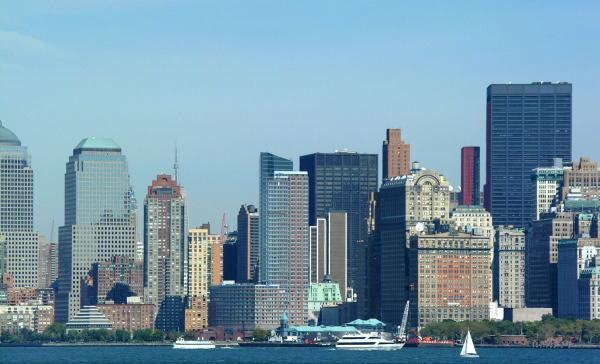PLAN TO RAISE LAKE ONTARIO WATER-LEVEL DETAILS SHOCKING LOSS OF BOATING PROPERTY DAMAGE TO GET NYC LOW-COST HYDRO POWER
By James Hufnagel
 |
| Bad News: Lake Ontario boaters can expect less boating days. Loss of tourism, millions in property damage are costs Niagara County will pay..... |
 |
| Good News: New York City will get a little more cheap Hyrdo-power by flooding Lake Ontario. |
Damage due to erosion is nothing new on the southern shoreline of Lake Ontario. On average, one foot of Niagara County disappears into Lake Ontario every year.
Because of current water level controls, implemented in 1960, to benefit NYPA’s St. Lawrence hydropower plant, Lake Ontario’s level fluctuates every year by four-feet, with highest levels in early spring.
The International Joint Commission (IJC) is a bi-national organization that develops plans for managing waters of the Great Lakes, and the Niagara and St. Lawrence Rivers. Their newest proposal, a plan called "BV7, " would raise the high water level of Lake Ontario by an “average 5.5 inches.” Some years it will be nearly one foot higher.
The BV7 plan admits, that, combined with normal spring storm activity, the new, higher water levels will increase damage from wind, waves, storm surge and ice action to Niagara County 's shoreline significantly.
In the IJC publication, " Lake Ontario and the St. Lawrence River: A New Path Forward," detailed economic analysis” spells out the costs and benefits, and the potential harm the plan will do to the Niagara County.
Waterfront property owners, the IJC advises, should “prepare for and adapt to the dynamic conditions found along the shoreline of Lake Ontario ."
Some possibilities include:
* May reduce benefits to Lake Ontario shoreline property owners.
* The life span of existing shoreline protection structures could be reduced.
* Recreational boaters could also see some changes due to the slightly more variable water levels from year to year under the proposed new approach.
* There could be fewer recreational boating days.
In return for less boating days and loss of shoreline, the plan will provide “more stable and predictable flows ... expected to provide economic benefits to the region's hydropower plants."
The annual, additional losses to shoreline property stakeholders as a result of BV7 implementation, as listed in the plan, includes shore protection maintenance ($2.62 million), additional erosion costs to properties ($2.62 million), flooding ($310,000) and loss of recreational boating ($1.13 million). Our region takes an annual $6.6 million hit.
The plan also lists annual increases in revenues anticipated for NYPA St. Lawrence ($3.44 million) and Hydro Quebec's ($1.96 million) hydropower generation plants.
During the 2010 gubernatorial debate, candidate Andrew Cuomo said, "We need to get the power from upstate New York, from Western New York and Canada, low cost power to the metropolitan area of New York City." After getting elected, Cuomo appointed two to the group who later helped create the BV7 plan, DEC Commissioner Joseph Martens and Dierdre Scozzafava, deputy secretary of state, and former assembly member from St. Lawrence County, home of the NYPA hydropower plant.
Given Cuomo insiders’ support, BV7’s passage is likely. As the plan admits, New York City will get millions in low cost power. Niagara County loses millions in boating, tourism, and property damage.